
A garden is incomplete without clematis (Clematis spp. and cvs., USDA Hardiness Zones 4–11). From the moment I grew my first one, I was hooked. The flowers can be in-your-face bold or uncharacteristically demure, but it doesn’t matter to me—I’ll take them all. I haven’t quite ringed my small garden in clematis, but it’s getting close. Few flowers offer such a kaleidoscope of colors and a myriad of exquisite shapes. Hybrid cultivars (like the ones featured here) tend to be the most popular because their flowers are fabulously showy—often oversize—and always delightful.
Clematis are indispensable in any-size garden as accent plants on fences, walls, arbors, posts, and pergolas, but they are equally brilliant rambling over and through trees and shrubs and twining with other vines. The Chicago Botanic Garden (CBG) has trialed an amazing 224 different clematis over the past 22 years including large- and small-flowered hybrids, species, and nonclimbing herbaceous varieties. Because it would be overwhelming to present all of our trial results in one article, I’ve decided to concentrate on the performance of 108 of the most popular hybrids and cultivars of clematis. I hope it will inspire you to plant one—or even as many as 13, like me.
Top Performers

A clematis doesn’t have to be big to be bold. Picardy™ (‘Evipo024’) epitomizes this rule; its compact habit certainly doesn’t restrain the boldness of the vivid, violet-red flowers. This is no shrinking violet! Picardy™ is free flowering and often reblooms into late summer. Topping out at 5 feet tall, its petite size is suitable for containers and for small patios where larger clematis would be overwhelming.

If someone were to ask me for a list of my favorite plants right now, ‘Princess Diana’ clematis would definitely top that list. Its tuliplike flowers are not only beautiful but also strikingly different in form from most large-flowered hybrids. The luminous tepals flare outward like a trumpet as they mature, revealing the creamy yellow stamens. ‘Princess Diana’ has a wispy habit when first planted but is a strong grower that gets more robust with age. It pairs surprisingly nicely with the gently nodding, lavender-blue flowers of ‘Prince Charles’ clematis.

To look upon Blue Angel™ (‘Blekitny Aniol’) in full, glorious bloom is a heavenly sight indeed. A pale center and ruffled edges enhance the etherealness of its charming blue blossoms. Hundreds of flowers blanket its robust stems each summer, making it one of the most prolific bloomers I’ve ever seen. Blue Angel™, however, is not for the faint of heart; its Jack-and-the-Beanstalk growth rate can be daunting to a timid gardener. An eastern exposure is ideal for growing Blue Angel™ and other light-colored clematis because strong sunlight will fade pastel flowers. Reserve southern and western positions for clematis in deeper shades of blue, red, and purple.

Pink Champagne™ (‘’Kakio’ is one of the earliest large-flowered clematis to bloom. As the name implies, this variety boasts bubbly, bright pink tepals with pale centers and bright yellow stamens. Pink Champagne™ is a strong climber with a fairly narrow expanse, meaning it works well in tight spaces. I grow this variety alongside my garden gate in a cramped space that is less than a foot wide. The stems shoot straight up, making a beautiful pink exclamation point.

‘Viola’ is, in a word, sumptuous. The velvety, dark purple flowers are exceptional in their profusion and richness. This is a vigorous vine, reaching 10 feet tall, but climbs reasonably well without too much assistance (unlike some other large clematis varieties). Although we grew ‘Viola’ on a chain-link fence—ho hum—I always imagined its richly colored flowers more splendidly displayed against a silvery blue conifer or perhaps intertwined with a pearly white–flowered ‘Huldine’ or a rosy ‘Margot Koster’ clematis.

‘Wada’s Primrose’ embodies the very definition of flower power: A bumper crop of delicate primrose yellow flowers clothe the stems from top to bottom, sometimes beginning as early as mid-spring. I find the harmonious combination of soft yellow tepals and yellow stamens quite soothing. ‘Wada’s Primrose’ has a refined habit, growing straight upward rather than taking a more circuitous path to the top of the fence. At 8 feet tall, it may seem incongruous to recommend ‘Wada’s Primrose’ for small spaces, but its verticality is an unfailing trait.

I first saw ‘Madame Julia Correvon’ grown to perfection in England and knew instantly that I wanted it for the CBG trial and my garden at home. The nodding, claret red tepals twist backward, giving the flowers a gappy appearance and thrusting their golden eye of stamens in your face. The sweetly scented blossoms are produced in great profusion for well over a month, beginning in late spring, and then reappear sporadically until the first frost. Because ‘Madame Julia Correvon’ blooms a bit early for a C. viticella–type clematis, its first flowers mingle beautifully with the waning blossoms of the popular ‘New Dawn’ rose (Rosa ‘New Dawn’, Zones 5–9).
How to Prune Clematis
The thing that causes the most confusion and angst for gardeners when it comes to clematis is pruning. Cut them back incorrectly and you won’t get any flowers; don’t cut them back at all and the plants may never reach their potential. In the 1960s, growers lumped clematis into three groups to simplify pruning. Rather than being scientific or taxonomic, these groups are based on the flowering habits of clematis—whether they bloom on old or new stems. This article deals only with the clematis that fall into either pruning group 2 or group 3. Here’s how to trim those types:

Group 2
VINES Form flower buds in the previous growing season and include large-flowered and double-flowered cultivars that bloom in spring and in early to midsummer.
Prune minimally to remove dead or errant stems in late winter to early spring. Waiting until the leaf buds begin to swell makes it easier to see what’s alive and what’s not, which helps preserve as many flowers as possible.
Some varieties, such as ‘Marie Boisselot’ and ‘Pink Fantasy’, can produce flowers on new stems, too, so pruning these varieties back to a foot in late winter encourages a later bloom season.

Group 3
VINES Form flower buds on new stems and include late-season, large-flowered cultivars; late-flowering species, such as C. viticella; and herbaceous species.
Cut back stems to healthy buds near the base of the plant in late winter to early spring. Train and tie new stems as they emerge to optimize the display for the coming season.
Clematis Trial Results
| Rating | Clematis | Flower color | Flower coverage | Flower size (diameter) | Bloom period | Height | Pruning group |
| ★★★ | ‘Abundance’ (v) | Wine red | Good | 3 inches | Early summer to midsummer | 10 feet | 3 |
| ★★★ | ‘Ascotiensis’ | Lavender-blue | Good | 5½ inches | Early summer to late summer^ | 6 feet | 3 |
| ★★★ | Avant-garde™ (‘Evipo033’) | Red and pink, double | Excellent | 2½ inches | Early summer to midsummer | 7 feet | 3 |
| ★★★★ | ‘Bees’ Jubilee’ | Mauve-pink, darker bar | Excellent | 6 inches | Midspring to late spring^ | 6 feet | 2 |
| ★★★ | ‘Betty Corning’ (v) | Pink-mauve | Good | 2½ inches | Early summer to late summer | 10 feet | 3 |
| ★★★ | ‘Bill Mackenzie’ | Sulfur yellow | Good | 1½ inches | Midsummer to late fall | 15 feet | 3 |
| ★★★ | ‘Black Prince’ (v) | Deep red-purple | Excellent | 3½ inches | Early summer to midsummer | 12 feet | 3 |
| ★★★★ | Blue Angel™ (‘Blekitny Aniol’) | Pale rosy blue | Excellent | 4½ inches | Late spring to midsummer | 12 feet | 3 |
| ★★★★ | ‘Blue Belle’ (v) | Deep violet-blue | Excellent | 3½ inches | Early summer | 10 feet | 3 |
| ★★★ | Bonanza™ (‘Evipo031’) | Purple-blue | Excellent | 5 inches | Midspring to midsummer | 6 feet | 3 |
| ★★★ | Bourbon™ (‘Evipo018’) | Deep magenta-red | Good | 7½ inches | Midspring to late spring^ | 7 feet | 2 |
| ★★★ | ‘Carmencita’ (v) | Carmine-pink | Excellent | 3 inches | Early summer to midsummer | 10 feet | 3 |
| ★★★ | Cassis™ (‘Evipo020’) | Purple, double | Excellent | 4 inches | Early summer to midsummer | 6 feet | 3 |
| ★★★ | Clair de Lune/Blue Moon (‘Evirin’) | White and pale lilac | Good | 7 inches | Midspring to midsummer | 8 feet | 2 |
| ★★★★ | ‘Comtesse de Bouchaud’ | Mauve-pink | Excellent | 4½ inches | Late spring to late summer^ | 8 feet | 3 |
| ★★★ | Crystal Fountain™ (‘Evipo038’) | Lavender, double | Excellent | 6 inches | Midspring to early summer^ | 7 feet | 2 |
| ★★ | ‘Daniel Deronda’ | Deep purple-blue | Fair | 7 inches | Late spring to early summer^ | 8 feet | 2 |
| ★★★ | ‘Doctor Ruppel’ | Deep rose-pink | Good | 6½ inches | Late spring to early summer | 7 feet | 2 |
| ★★★★ | ‘Emilia Plater’ (v) | Violet-blue | Excellent | 4 inches | Early summer | 10 feet | 3 |
| ★★ | Empress™ (‘Evipo011’) | Pink, double | Fair | 6 inches | Midspring to midsummer | 8 feet | 2 |
| ★★★ | ‘Ernest Markham’ | Magenta | Excellent | 4½ inches | Midspring to late summer | 7 feet | 3 |
| ★★★★ | ‘Etoile Violette’ (v) | Dark purple | Excellent | 4 inches | Midspring to late summer^ | 10 feet | 3 |
| ★★★ | Galore™ (‘Evipo032’) | Deep purple | Good | 4 inches | Late spring to midsummer | 10 feet | 3 |
| ★★★ | ‘Guernsey Cream’ | Creamy yellow | Excellent | 5 inches | Midspring^ | 7 feet | 2 |
| ★★★ | ‘Hagley Hybrid’ (‘Pink Chiffon’) | Pink | Good | 6 inches | Early summer^ | 8 feet | 3 |
| ★★★ | Harlow Carr™ (‘Evipo004’) | Deep purple-blue | Excellent | 5½ inches | Midspring to midsummer^ | 7 feet | 3 |
| ★★★ | ‘Huldine’ | Pearly white | Good | 3½ inches | Late spring to midsummer | 10 feet | 3 |
| ★★★ | ‘Jackmanii’ | Dark purple | Good | 5 inches | Early summer to late summer | 10 feet | 3 |
| ★★★ | Josephine™ (‘Evijohill’) | Lilac-pink, double | Good | 5 inches | Midspring to midsummer | 8 feet | 2 |
| ★★ | Kingfisher™ (‘Evipo037’) | Purple-blue | Good | 5½ inches | Late spring to midsummer | 5 feet | 2 |
| ★★★★ | ‘Madame Julia Correvon’ (v) | Claret red | Excellent | 4 inches | Late spring to midsummer^ | 9 feet | 3 |
| ★★★★ | ‘Margot Koster’ (v) | Rosy pink | Excellent | 4½ inches | Early summer | 10 feet | 3 |
| ★★★ | ‘Marie Boisselot’ | White | Good | 7 inches | Midspring to midsummer^ | 8 feet | 2 or 3 |
| ★★★ | ‘Matka Urszula Ledochowska’ | White | Good | 6 inches | Midspring^ | 8 feet | 2 |
| ★★★ | ‘Miss Bateman’ | White | Good | 6 inches | Midspring to early summer | 6 feet | 2 |
| ★★★ | ‘Mrs. Cholmondeley’ | Lavender-blue | Good | 6 inches | Midspring to midsummer^ | 6 feet | 2 or 3 |
| ★★ | ‘Multi Blue’ | Purple-blue, double | Fair | 6 inches | Early summer to midsummer^ | 8 feet | 2 |
| ★★★ | ‘Nelly Moser’ | Pale mauve, carmine bar | Good | 6 inches | Late spring to early summer^ | 7 feet | 2 |
| ★★★ | ‘Pagoda’ (v) | White and mauve-pink | Good | 1¼ inches | Early summer^ | 7 feet | 3 |
| ★★★ | Parisienne™ (‘Evipo019’) | Lavender-purple, double | Good | 6 inches | Late spring to midsummer^ | 6 feet | 2 |
| ★★★ | ‘Perle d’Azur’ | Pinky blue | Excellent | 4 inches | Early summer to midsummer^ | 8 feet | 3 |
| ★★★★ | Picardy™ (‘Evipo024’) | Violet-red | Excellent | 6 inches | Late spring to midsummer^ | 5 feet | 2 |
| ★★★★ | Pink Champagne™ (‘Kakio’) | Pink | Excellent | 5 inches | Midspring to early summer^ | 7 feet | 2 |
| ★★★ | ‘Pink Fantasy’ | Pink, peachy tones | Fair | 5½ inches | Early summer | 7 feet | 2 or 3 |
| ★★★ | ‘Prince Charles’ | Lavender-blue | Excellent | 4 inches | Late spring to midsummer | 6 feet | 3 |
| ★★★ | ‘Princess Diana’ | Deep red-pink | Good | 3 inches | Early summer to midsummer^ | 8 feet | 3 |
| ★★★ | ‘Purpurea Plena Elegans’ (v) | Dark magenta | Good | 2 inches | Early summer to early fall | 10 feet | 3 |
| ★★★ | ‘Rouge Cardinal’ | Dark red | Good | 5 inches | Midspring to midsummer | 7 feet | 3 |
| ★★★ | ‘Royal Velours’ (v) | Reddish purple | Good | 3 inches | Early summer | 10 feet | 3 |
| ★★★★ | ‘Södertälje’ (v) | Deep magenta | Excellent | 3½ inches | Late spring to midsummer^ | 12 feet | 3 |
| ★★★ | ‘Sympatia’ | Rosy lilac | Good | 7 inches | Late spring to early summer | 10 feet | 2 |
| ★★★ | ‘The President’ | Dark purple | Good | 6 inches | Midspring to midsummer^ | 8 feet | 2 |
| ★★★ | ‘Venosa Violacea’ (v) | White and purple | Good | 4½ inches | Early summer | 10 feet | 3 |
| ★★ | ‘Veronica’s Choice’ | Lavender, double | Fair | 8 inches | Early summer | 8 feet | 2 |
| ★★★ | Versailles™ (‘Evipo025’) | Maroon | Excellent | 7 inches | Late spring to early summer | 4 feet | 2 |
| ★★★★ | ‘Ville de Lyon’ | Cherry red | Excellent | 5 inches | Late spring to midsummer^ | 8 feet | 3 |
| ★★★★ | ‘Viola’ | Dark purple | Excellent | 5 inches | Late spring to midsummer | 10 feet | 3 |
| ★★★★ | ‘Vyvyan Pennell’ | Rosy lavender, double | Excellent | 7 inches | Midspring to midsummer^ | 7 feet | 2 |
| ★★★★ | ‘Wada’s Primrose’ | Creamy yellow | Excellent | 6 inches | Late spring to early summer | 8 feet | 2 |
| ★★★★ | ‘Warszawska Nike’ | Red-purple | Excellent | 6 inches | Late spring to midsummer | 8 feet | 3 |
RATING KEY
★★★★ Excellent
★★★ Good
★★ Fair
★ Poor
(v) Clematis viticella group
^ Sporadic flowering noted after the initial bloom period
 How We Did the Trial
How We Did the Trial

Since 1990, CBG has evaluated a staggering number of clematis—a sampling of which is represented on the chart.
Number evaluated: 224
How long: A minimum of six years
Criteria: Ornamental qualities, ease of growth, hardiness, disease and pest resistance
Zone: 5b
Conditions: Full sun; well-drained, alkaline, clay-loam soil. A series of 8-foot-tall chain-link fences were aligned north to south so that each clematis variety was grown in an east and a west exposure.
Care: Minimal, thereby allowing the plants to thrive or fail under natural conditions. Plants were cut back in late winter following standard pruning guidelines.
 |
 |
 |
 |
 |
The Ins and Outs of Clematis
Don’t plant it just anywhere
Selecting the right clematis and the right place in your garden to grow it should be a hand-in-hand decision. Mind the cardinal rule of growing clematis—give it plenty of sunlight but keep its roots cool—to ensure success. Planting shrubs or perennials in front of the vine shades its base and cools the soil. Clematis likes plenty of water, especially while its roots are becoming established after planting, so avoid putting it in a dry root zone, like under the eaves of a building or too near the base of a large tree.
What on earth is a “Tepal”?

The flower structure of clematis is not as simple as it seems—and that’s what makes it interesting. Clematis flowers are technically petal-less. The colorful “petal” is actually a modified sepal, which, in other flowers, is typically a sort of leafy green structure that sits below the true petals. Because this structure on clematis is neither a petal nor a sepal, it is referred to as a “Tepal.” Clematis flowers have a cluster of stamens sitting at the center of the tepals. The stamen color is not only decorative but also helpful in identifying specific cultivars.
Select the right support
Unlike vines that climb by twining stems or tendrils, clematis attaches to a support by wrapping its leaf petioles around it. There’s a limit to the length of the petiole; therefore, small-diameter supports, such as bamboo canes, poles, or plastic-coated wires, are best. If the support is too wide for the petioles to wrap around fully, then the plant will not be anchored well, making it susceptible to damage or displacement by wind. I’ve seen beautifully designed trellises with 1-inch-square slats that are unusable because the petioles can’t twist around them easily.
It may need a leg up
Vigorous new shoots grow quickly with the onset of warm days, so training clematis stems to keep them on course can be an almost-daily task in spring. With the right support, many clematis will do an admirable job of climbing on their own; however, some can be a bit unruly and need a little more help. As stems grow, I tie them to the support with raffia until the petioles can do their job. Keep in mind that your neighbor may get the best show if you don’t place and train your clematis well.
Food is just as important as water
Clematis is a heavy feeder that appreciates supplemental nutrients each year. Organic compost or rotted manure are great fertilizers, which also act as mulch to cool the roots and retain soil moisture. If you use a balanced liquid fertilizer instead, begin fertilizing as new growth emerges in spring, but discontinue once the flower buds swell. Resume fertilizing after flowering to promote more growth and perhaps another crop of flowers.
Seed heads provide a late-season show

The seed heads of some clematis can be eye-catching in their form and color. The styles may become feathery with age, changing color to yellow, golden brown (photo, above), or silver. One of its common names—old man’s beard—refers to the fluffy seed heads that are prominent on some species.
It is not, unfortunately, pest- or disease-free
Rabbits are pernicious pests, browsing succulent new stems as they emerge. A wire-mesh cage, about 2 feet tall surrounding the base of the plant, will help protect against rabbits; the fencing may also deter mice from nesting at the base of the plant. Earwigs are creepier than they are harmful but can cause significant cosmetic damage by chewing holes in flower buds and leaves.

Clematis wilt is a devastating disease for some large-flowered clematis. It strikes early in the season when a plant is in bud or just beginning to bloom. The fungus usually enters near the base of the plant through a crack in the stem, and as the fungus grows, it cuts off water and nutrients to all growth above the infection point, resulting in wilted or collapsed stems (photo, above). All affected stems should be removed and destroyed. The good news is that clematis wilt is rarely deadly, and new stems should redevelop. Some clematis, especially older cultivars, are more prone to wilt than others. If the problem persists, I recommend replanting with a C. viticella cultivar because it is not troubled by wilt (see the [v] notation on the chart).
New Kids on the Block
The following clematis have been in the trial for only four years but, so far, are showing signs of being exceptional plants.

When I first saw the crimson flowers of Rüütel™ (‘Kiviruut’) in 2009, I was like a wide-eyed kid experiencing a Christmas miracle. It’s truly a luscious color. The 7-inch-wide flowers feature deeply grooved tepals with ruffled edges and similarly colored stamens, which give it a monochromatic look that I love. Rüütel™ blooms from late spring to midsummer on stems that only reach 6 feet tall, making it perfect for small patios where the luxuriant blossoms can be viewed up close. Rüütel™ is an easy-care (pruning group 3) clematis.

Piilu™ (‘Kivso’), which translates as “little duckling,” has pretty bicolored flowers with pale purplish pink margins and deep pink central bars. I’m particularly impressed by its prodigious flower production—it’s one of the most floriferous clematis I’ve ever grown. The open-faced flowers, 3 to 4 inches wide, are produced from early to late summer and are nicely distributed over the entire plant. The early flowers are supposedly semi-double, but I’ve only seen single flowers on our plants. This is a strong climber, reaching 6 feet tall with a narrow but full habit. For pruning purposes, Piilu™ blooms on old wood, so it can be lumped into group 1 or 2. This also means that it will flower earlier if there is no winter injury to the stems.

Double-flowered plants aren’t always my cup of tea; there’s something a bit fussy looking about them. But I make an exception for ‘Teshio’. Its spiky, double, lavender-blue flowers, stretching to 5 inches wide, are reminiscent of the venerable ‘Belle of Woking’ clematis, albeit darker. It’s fun to watch the spidery tepals unfurl—a bit haphazardly, at first, but eventually morphing into a pretty, well-structured blossom. ‘Teshio’ is a fairly strong bloomer from late spring to early summer, sometimes reblooming later in summer. It maintains a compact, bushy habit, reaching 7 feet tall, and is perfect for containers or patio plantings. Clematis is a great cut flower, and the spidery blossoms of ‘Teshio’ create quite a buzz in a floral arrangement.

There have been many wonderful clematis introductions over the years, stretching as far back as the 1800s. So Starburst™ (‘Roblom’), which was introduced in 2008, is a real newbie compared to ‘Jackmanii’, a garden standard that was introduced in 1858. Starburst™ features exuberant, 7-inch-wide magenta flowers with a big boss of yellow stamens from mid- to late spring. The creamy centers of each tepal display a starburst pattern within the darker flower. This is an impressive bloomer and a strong climber, reaching up to 8 feet tall.
Richard Hawke is the plant evaluation manager at the Chicago Botanic Garden in Glencoe, Illinois.
Photos: courtesy of Richard Hawke, except: Danielle Sherry; BBC Magazines Ltd./www.gapphotos.com; Manuela Goehner/www.gapphotos.com; www.millettephotomedia.com. Illustrations: Dolores R. Santoliquido
Sources
The following mail-order plant sellers offer many of the clematis featured:
Brushwood Nursery, Athens, Ga.; 706-389-0689; www.gardenvines.com
Joy Creek Nursery, Scappoose, Ore.; 503-543-7474; www.joycreek.com
Whitney Gardens & Nursery, Brinnon, Wash.; 800-952-2404; www.whitneygardens.com
Fine Gardening Recommended Products
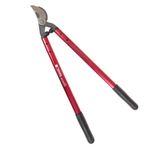
Corona High Performance Orchard Loppers
Fine Gardening receives a commission for items purchased through links on this site, including Amazon Associates and other affiliate advertising programs.
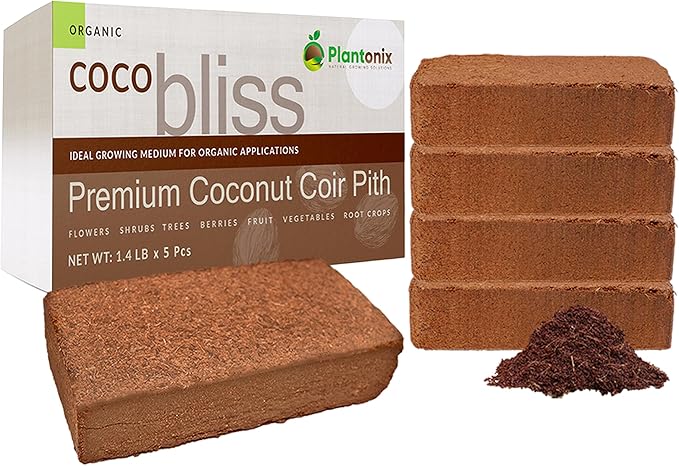
Coco Bliss 650gm Bricks (5-Pack) - Organic Coco Coir
Fine Gardening receives a commission for items purchased through links on this site, including Amazon Associates and other affiliate advertising programs.
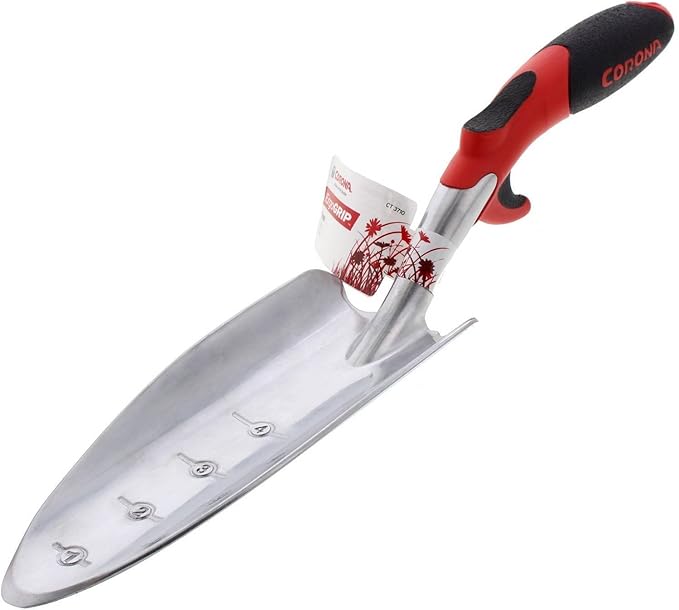
Corona E-Grip Trowel
Fine Gardening receives a commission for items purchased through links on this site, including Amazon Associates and other affiliate advertising programs.


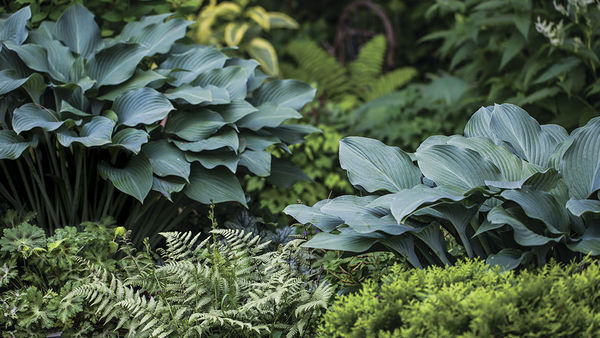
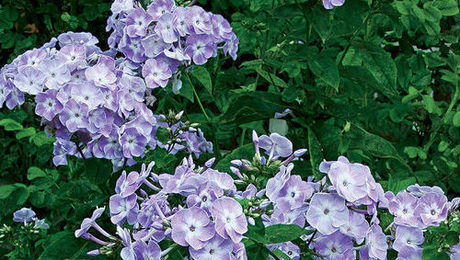
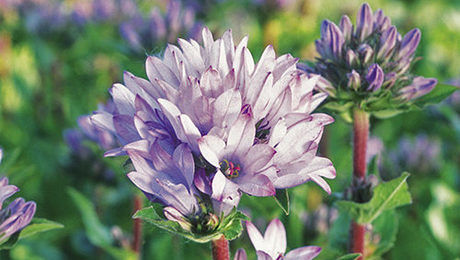













Comments
Log in or create an account to post a comment.
Sign up Log in